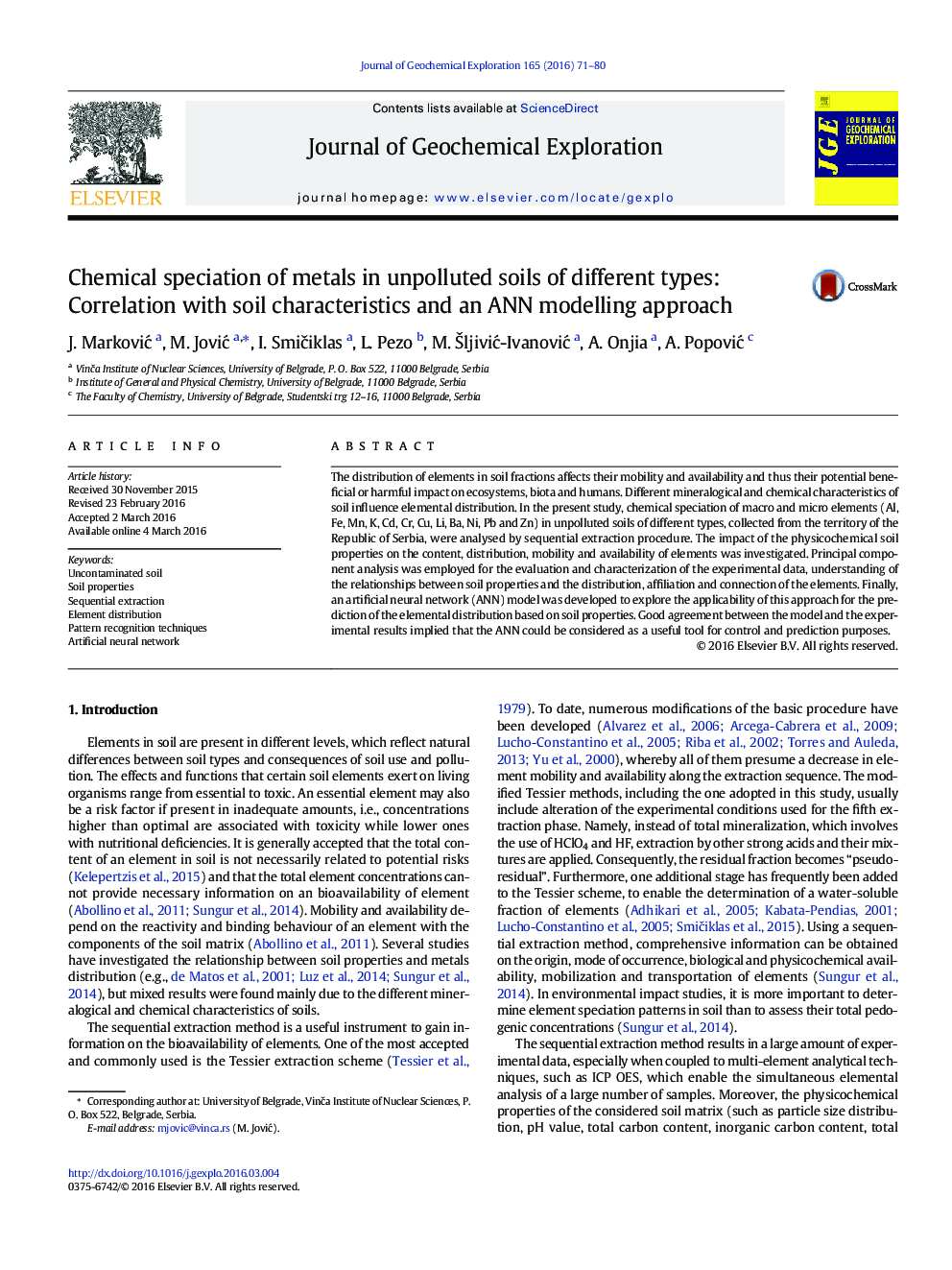| Article ID | Journal | Published Year | Pages | File Type |
|---|---|---|---|---|
| 4456925 | Journal of Geochemical Exploration | 2016 | 10 Pages |
•Distribution of 12 metals in unpolluted soils was analysed by sequential extraction.•Examined metals, except Cd and Ba, were commonly found in less available fractions.•Soil texture and TOC had a predominant effect on metal content and speciation.•Higher content of sand fraction affects higher mobility of Pb, Zn and Al.•ANN model accurately predicts element distribution based on soil properties.
The distribution of elements in soil fractions affects their mobility and availability and thus their potential beneficial or harmful impact on ecosystems, biota and humans. Different mineralogical and chemical characteristics of soil influence elemental distribution. In the present study, chemical speciation of macro and micro elements (Al, Fe, Mn, K, Cd, Cr, Cu, Li, Ba, Ni, Pb and Zn) in unpolluted soils of different types, collected from the territory of the Republic of Serbia, were analysed by sequential extraction procedure. The impact of the physicochemical soil properties on the content, distribution, mobility and availability of elements was investigated. Principal component analysis was employed for the evaluation and characterization of the experimental data, understanding of the relationships between soil properties and the distribution, affiliation and connection of the elements. Finally, an artificial neural network (ANN) model was developed to explore the applicability of this approach for the prediction of the elemental distribution based on soil properties. Good agreement between the model and the experimental results implied that the ANN could be considered as a useful tool for control and prediction purposes.
